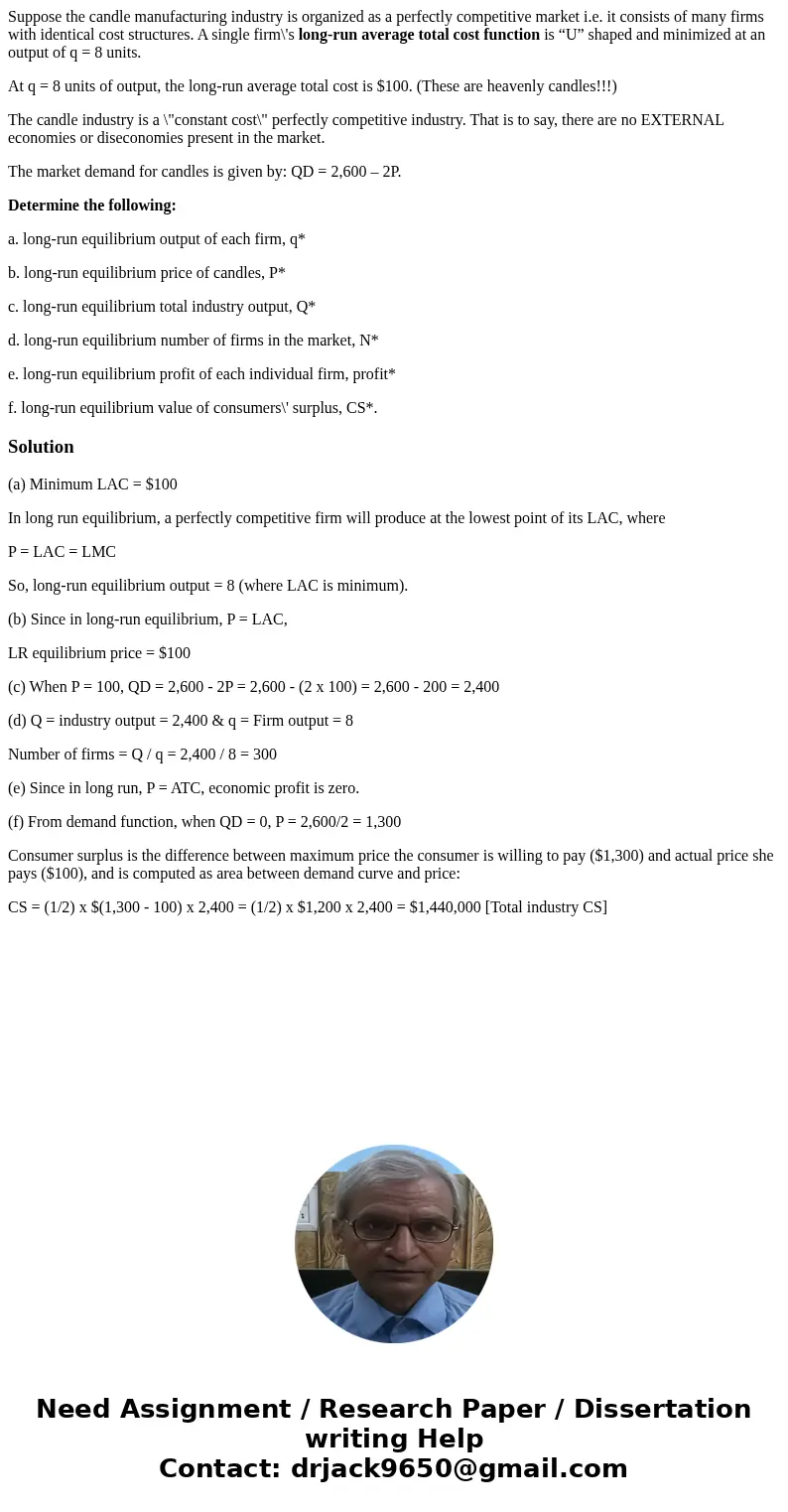Suppose the candle manufacturing industry is organized as a
Suppose the candle manufacturing industry is organized as a perfectly competitive market i.e. it consists of many firms with identical cost structures. A single firm\'s long-run average total cost function is “U” shaped and minimized at an output of q = 8 units.
At q = 8 units of output, the long-run average total cost is $100. (These are heavenly candles!!!)
The candle industry is a \"constant cost\" perfectly competitive industry. That is to say, there are no EXTERNAL economies or diseconomies present in the market.
The market demand for candles is given by: QD = 2,600 – 2P.
Determine the following:
a. long-run equilibrium output of each firm, q*
b. long-run equilibrium price of candles, P*
c. long-run equilibrium total industry output, Q*
d. long-run equilibrium number of firms in the market, N*
e. long-run equilibrium profit of each individual firm, profit*
f. long-run equilibrium value of consumers\' surplus, CS*.
Solution
(a) Minimum LAC = $100
In long run equilibrium, a perfectly competitive firm will produce at the lowest point of its LAC, where
P = LAC = LMC
So, long-run equilibrium output = 8 (where LAC is minimum).
(b) Since in long-run equilibrium, P = LAC,
LR equilibrium price = $100
(c) When P = 100, QD = 2,600 - 2P = 2,600 - (2 x 100) = 2,600 - 200 = 2,400
(d) Q = industry output = 2,400 & q = Firm output = 8
Number of firms = Q / q = 2,400 / 8 = 300
(e) Since in long run, P = ATC, economic profit is zero.
(f) From demand function, when QD = 0, P = 2,600/2 = 1,300
Consumer surplus is the difference between maximum price the consumer is willing to pay ($1,300) and actual price she pays ($100), and is computed as area between demand curve and price:
CS = (1/2) x $(1,300 - 100) x 2,400 = (1/2) x $1,200 x 2,400 = $1,440,000 [Total industry CS]

 Homework Sourse
Homework Sourse